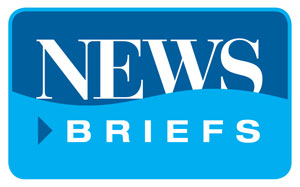Four homes in Melrose, Massachusetts, recently experienced a sewage backup of epic proportions after a sewer main line became blocked.
The residents who experienced it had to leave their homes, as the bathrooms were covered in human waste, and they say it was a thing to behold. “I was getting ready for work and then I heard a bubble,” Silvana Ortiz, tells WHDH News. “It was a crazy scene. It literally just spun and flowed out.”
They also shared some footage of the event via Twitter:
SEWAGE BACKUP: People who live on Brazil St in Melrose say the DPW overpresurrized a blocked line which caused sewage to back up in to their homes. The residents say they have to shell out $ for cleanup until insurance covers. One resident caught it all on camera. @7News pic.twitter.com/e3kVWYZH7X
— Alex DiPrato (@AlexDiPrato) June 21, 2019
Some Melrose residents dealing with massive sewage backup into their homes. Major cleanup with extensive damage to floors and walls. And they say they felt “stranded” by the city. #WCVB pic.twitter.com/C9xJdtL2Bz
— Sera Congi (@seracongi) June 21, 2019
Santa Cruz River Revival Project Going Better Than Expected
Public officials are reviving a stretch of the Santa Cruz River, and the resulting flow is making a bigger impact than expected as far as reestablishing the river and natural habitat for wildlife.
The utility had originally predicted the flow would go no more than 5,000 feet, but it’s wider than expected and stretching around 2.5 miles.
Officials say it’s likely because the recharging process underground is going slower than anticipated, but the outcome is welcome among local residents.
Mswmag.com first covered the Santa Cruz River Heritage Project in detail last August. Officials plan for now to release more than 1 billion gallons of reclaimed water into the Santa Cruz River each year, which is slightly more than 10% of Tucson’s total reclaimed water supply.
City of Detroit to Invest $500 Million in Sewer/Water Infrastructure
The city of Detroit is planning to invest $500 million into its sewer and water infrastructure. Public officials say it will be the largest upgrade of the city’s water/wastewater infrastructure since 1930.
The city aims to replace or reline more than 50 miles of water mains in 2019 alone as part of the five-year capital improvement project.
Detroit Water and Sewerage Department Director Palencia Mobley tells Michigan Radio they’re looking at neighborhood-level data about the state of the city’s sewer and water infrastructure.
“And after we crunch it out, we get a list of neighborhoods that we should go into and do an assessment,” Mobley says. “So we’re assessing everything first. Once we assess what we find, and analyze that data, then we come up with design plans and construction documents, and we bid those projects out.”






